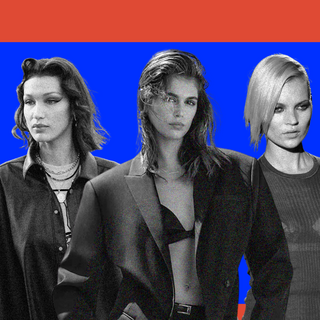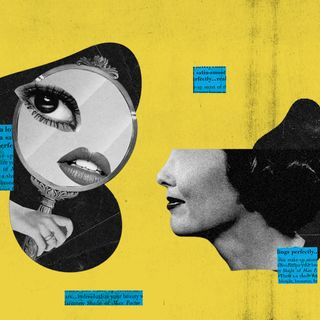When news of Pete Davidson reportedly dating Emily Ratajkowski broke online, Davidson’s name began to trend on Twitter almost on cue. The jokes and memes poured in, and they all followed the same narrative thread: how does he “bag” such “baddies”? It shows how heterosexual dating culture inevitably ranks people according to their desirability — a tendency that’s eerily close to how incels see the world.
Some of the memes are undeniably funny. They’re also not all uniform: some speak from a place of envy and indignation, but others point out that women have been saying it forever — being funny and kind is all it takes. But there’s a more troubling undercurrent to the conversations: that some women are more “worthy” and that men like Pete Davidson are “stealing” all of them.
The way social media conversations have fixated on Pete Davidson’s love life shows how many assumptions in heterosexual dating share a thin boundary with an incel’s worldview. Most people who don’t identify as incels nonetheless rank people on a scale of desirability, and find themselves unable to wrap their heads around a “mismatch” in terms of physical appearances. The disbelief that Pete Davidson could date women who are considered among the most beautiful in the world shows an underlying fixation on beauty. And sometimes, the conversation veers into his other physical attributes — his height, and the alleged size of his penis — and is inevitably dehumanizing. In the world of straight romance, there’s no room for centering intimacy, emotional intelligence, and warmth as desirable; instead, an overwhelming emphasis on body parts remains the guiding ethos.
Related on The Swaddle:
Looksmax, Redpill, Femoid: Dissecting Incel Language and Ideology
Then, there’s the women: they’re rarely ever considered as people with discernment or taste — instead reduced to bodies that are “won” by an underdog figure in popular culture. In fact, Pete Davidson’s entire positioning in the pop culture discourse is a function of the women he’s dated. There would be no Pete Davidson if he’d been with “normal” women — and that’s the problem.
All in all, there’s a lot of fixation on the physical looks of everyone involved. Any news story carrying pieces on Davidson and his new romantic partner inevitably feature a side-by-side of an unflattering photo of Davidson and the most photogenic one of this partner in question. All of it has the implicit assumption that someone like him shouldn’t be “getting” someone like her, and yet he’s managed it consistently. It’s eerily close to incel-talk: there, too, is a lot of emphasis on looks (or lack thereof) determining one’s fate in the dating pool. Incels all want to “get” the most attractive women (“Stacys”); their inability to do so fosters resentment not only towards them, but towards the men who do (“Chads”).
It almost resembles the incel theory of sexual redistribution, which is based on the premise that there’s only a few men whom all the desirable women want — which puts other men at a disadvantage. The “what does he have that I don’t?” narrative speaks to this resentment, and the entitlement to women’s bodies that’s the underlying impulse behind the call for a “fairer” redistribution of sex.
Taken together, the different strands all point to an inherent commodification of women on the basis of their looks. It “sorts” them into goods, where the most valuable one have the highest competition and are unfairly acquired by only a few men. Some of the memes show a gamified version of this, where Davidson ranks high on the leaderboard of men with the most prized conquests.
Nobody wins in this narrative: not Pete Davidson, nor the women he’s dating. It’s an archaic view of sexuality and desire that reduces individuals to the sum of their parts; and the struggle to make sense of the situation shows a deeper discomfort with vulnerability in dating that’s unrecognized as an essential component. Under the impulse to rationalize it, then, is the damning evidence of the problem with heterosexual romance: that it’s inextricable from hierarchy, control, and conquest even today.




